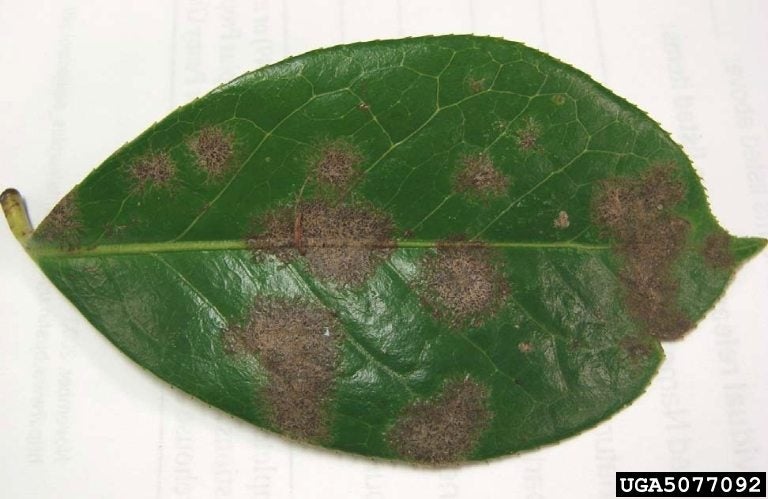What Is Algal Leaf Spot: Learn About Algal Leaf Spot Control


What is algal leaf spot and what do you do about it? Read on to learn about symptoms of algal leaf spot and tips on algal leaf spot control.
What is Algal Leaf Spot?
Algal leaf spot disease, also known as green scurf, is caused by Cephaleuros virescens, a type of parasitic algae. Algal leaf spot disease spores, which are spread by rain, create a big problem for more than 200 plant species, especially plants growing in warm, humid climates. Susceptible plants include those that have leathery leaves such as:
Recognizing Symptoms of Algal Leaf Spot
Algal leaf spot disease is marked by rough, net-like orange, brown, gray, or green blotches on the leaves, each measuring about ½ inch (1 cm.) in diameter or less. However, blotches that grow together take on the appearance of larger blotches. Although the disease affects primarily foliage, it sometimes impacts branches and twigs, causing a stunted appearance with reddish brown or pale green lesions.
Algal Leaf Spot Control
Algal leaf spot disease is rarely deadly, and the problems are mostly cosmetic. Unless the outbreak is severe, non-chemical strategies for treating algal leaf spot are usually adequate: Keep plants as healthy as possible, as well-managed plants are less susceptible to disease. Maintain proper soil drainage and water and fertilize as needed. Prune plants to improve air circulation and access to sunlight. Trim around the plants to reduce the humidity level, including overhanging trees that create too much shade. Rake up and dispose of leaves and debris under and around the affected plant. Discard infected debris carefully to prevent the spread of the disease. Keep in mind that the algae can survive on fallen leaves during the winter months. Water at the base of the plant. Avoid wetting the leaves as much as possible. Apply a Bordeaux mixture or copper-based fungicide if the plant is seriously infected. Repeat every two weeks during cool, damp weather.
Sign up for the Gardening Know How newsletter today and receive a free copy of our e-book "How to Grow Delicious Tomatoes".

A Credentialed Garden Writer, Mary H. Dyer was with Gardening Know How in the very beginning, publishing articles as early as 2007.